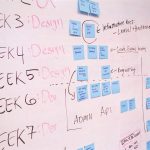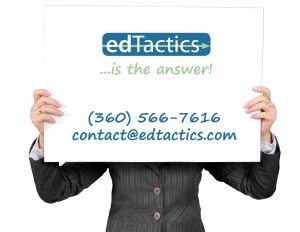Determining when to run a measure for new capital facilities or educational programs can be a positively daunting task to many school boards and superintendents throughout the country.
How do you begin? How do you approach your community? What if you need to run multiple measures at the same time?
Here are six simple questions to consider before sharing the details of a measure with your community and how much money the measure will take out of their pockets in cost-per-thousand assessed valuations.
 Question #1: Who has the time to run?
Question #1: Who has the time to run?
Who has time in your school district to take on the nearly overwhelming tasks of preparing, planning, communicating and directing election efforts? Typically, superintendents are called upon to plan and implement every aspect of proposals. Superintendent responsibilities for the daily operations of the school district and leading an educational system are difficult enough without piling on the myriad of tasks involved in planning and executing successful campaigns.
Make sure to divide the projects among multiple individuals, even a committee, to ensure that everyone can stay on top of their regular duties while also handling the needs of an upcoming election.
 Question #2: What improvements are included in your district’s proposal?
Question #2: What improvements are included in your district’s proposal?
Who determines the elements of a proposal and what research is used to determine those elements? Why are the district’s current facilities or programs not meeting the needs of the student, staff, and community? Many times, generic reasons such as need to build capacity, aged facilities, and increased student enrollment are communicated to the community at large as justification for a measure.
Although those reasons may be legitimate, the need to provide accurate detailed and specific information to an informed community is of paramount importance and can make the difference between passing or failing any measure.
 Question #3: What will your community really support?
Question #3: What will your community really support?
Find out what your community will support or, hopefully, embrace. Guessing or falling back on past experiences can be fatal for both bonds and levies. Sometimes, the elements and the needs have changed since your district’s last measure was passed.
You need to reach out to your community to discover how they see the school system and its needs before you present a project, not after.
 Question #4: Are you hearing feedback?
Question #4: Are you hearing feedback?
Give your community an opportunity to participate by implementing two-way communications. Listen and learn from your community. The ability to demonstrate that you genuinely care for hearing the good, bad and ugly from your community has lasting positive effects well before and beyond any proposal.
 Question #5: Do you have another measure running?
Question #5: Do you have another measure running?
Conventional wisdom dictated that school districts should never run a bond with a levy on the same ballot. However, recent studies are beginning to show a change in that way of thinking with many school districts experiencing success running multiple measures at the same time.
Of course, you should consider your own community’s approval history. Do you receive a high passage rate on all measures? Are the voting results of your measures often close to the margin of passing or failing? Do you need multiple levies such as a Maintenance & Operations Levy and a Tech Levy?
Reach out to your community and ask them what they think. Public Disclosure Commission (PDC) guidelines dictate that you cannot ask whether a community member will vote yes or no, however you can ask community members what their priorities are for school improvements. This rule may vary state-by-state so you will want to check with your state’s election commission to be sure prior to asking survey or interview questions.
 Question #6: When should you run?
Question #6: When should you run?
Elections for bonds and levies can run at several points throughout a year and when you run them can be somewhat independent of when the district intends to start the project (as long as this information is included in your messaging). You should always check your state’s specific regulations on election timing, of course.
To help determine when to run your bond, you refer to the voter records of past measures. Voter records are available for free from your county, and can be positively invaluable in helping you see, historically, when measures are more likely to succeed.
In conclusion…
Once you have considered these simple questions, you can determine what your bond proposal should include and the right time to put the bond measure out to your community for vote.
You will be surprised how these tactics will save you both money and time while investing in the future of your school district.
edTactics knows school districts because we come from school districts.
edTactics’ success stems from our associates’ professional experience working as school superintendents and program directors for decades. We know the ins and outs of school operations because we’ve been there… just like you.
Call us at (360) 566-7616 for a free consultation to discuss both your district’s present and future needs. If you prefer, you can also reach us via email.
We look forward to hearing from you!
Sincerely,
Art Edgerly & Eric Jacobson
Call us at (360) 566-7616 for Art or (360) 326-8433 for Eric
Email us using our online form.
Visit our website at www.edtactics.com
Like us on Facebook at www.facebook.com/edTactics
Follow us on Twitter at www.twitter.com/edTactics
Subscribe to have our blogs emailed directly to you by clicking this link! You can unsubscribe at any time and your email address will not be shared.


